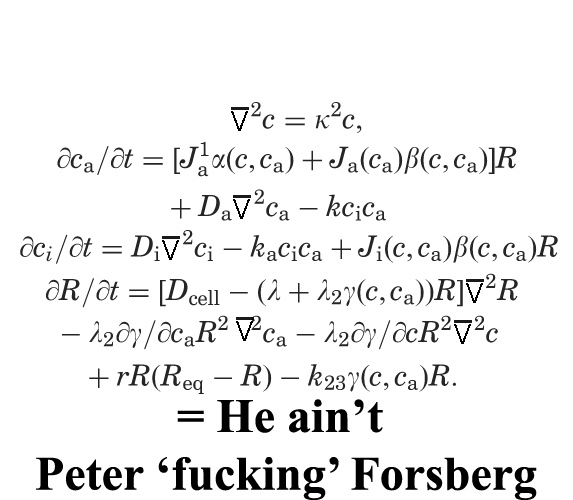
Having looked at an inordinate amount of advanced ‘sabermetric’ statistics, I think it’s unquestionable that they have their utility when analyzing the game of hockey. With that being said, their applicability in evaluating the worst draft busts since 1990 is heinous.
In an ESPN Insider article penned by Alvin Chang, he used Tom Awad’s Goals Versus Threshold (GVT) metric to evaluate the worst draft picks from 1990 to 2008.
If you’re unfamiliar with GVT, Awad describes it at Hockey Prospectus:
GVT is very similar to VORP in baseball: it is the value of a player, in goals, above what a replacement player would have contributed. The fact that GVT is measured in goals is crucial: statistics that divide up Win Shares, so that the ratings of a team’s players sum to that team’s number of wins, are very erratic and non-linear, since wins don’t increase or decrease linearly with team caliber. While hockey is ultimately about winning or losing, player’s contributions always come down to scoring goals and preventing them. A player cannot ‘win’ a game, even though he may be put in a situation where scoring a goal or making a key save would create or conserve a win. Each player’s role, no matter his position, is to try and increase the goal differential in favor of his team. An offensive player who scores a hat trick only to see his teammates allow 4 goals against has nevertheless done his job; a goaltender who stops 39 of 40 shots only to lose 1-0 has likewise performed well. Using this standard, all players can be compared by the same yardstick: how much did they help (or harm) their team’s goal differential?
Before delving into his actual top ten bust list, Chang prefaced it by saying that (he’s) only looking at players drafted from 1990 to 2008 to give time for development. Also, (he’s) using Tom Awad’s Goals versus threshold as our performance metric. I’ve calculated the expected GVT per season for each draft slot and compared it with a player’s actual performance.
Fair enough. Unfortunately however, Chang’s expected GVT per season calculations don’t account for fluctuations in the talent of each year’s respective draft class. Instead of comparing the GVTs of the players relative to each draft year, Chang measures each draft pick relative to the other players who were picked within the same draft year. The result is a list that prominently features Senators defenceman Chris Phillips as Chang’s fifth-biggest draft bust since 1990.
Phillips is the head of the worst draft since 1990. Any other year, he may have slipped out of the top five but in 1996, he was the top pick. This is seriously bad fortune for the Senators because, in most years, the No. 1 overall pick is significantly more valuable than those following it. But they had to settle for Phillips, who was thought to have limited potential on offense. As the Vancouver Sun’s Elliott Pap wrote before the draft, “Phillips wasn’t even good enough to take a regular shift for the gold-medal winning Canadian team at last winter’s World Junior Championships.”
Shhhhh Alvin! No one wants to hear about how few prospects actually take a regular with Canada at the World Junior Championships. It doesn’t fit the narrative. Carry on.
I digress. The Senators are well represented in the list: Kyle Turris is currently ranked ninth; Phillips fifth; and Alexandre Daigle third.
Conspicuously absent from the list was 1991 second overall pick Pat Falloon. Fortunately, I did a mathematical equation of my own:
Looking at each draft class since 1990, there’s a collection of players who ‘busted’ worse than Chris Phillips:
- 1990: Scott Scissons – 5th overall
- 1991: Pat Falloon (2nd), Scott Lachance (4th), Aaron Ward (5th) – all picked before Peter Forsberg
- 1992: Todd Warriner – 4th overall
- 1993: Alexandre Daigle – 1st overall
- 1994: Jason Bonsignore – 4th overall
- 1995: Steve Kelly – 6th overall
- 1996: Alexander Volchkov – 4th overall
- 1997: Daniel Tkaczuk – 6th overall
- 1998: Rico Fata -6th overall
- 1999: Patrick Stefan (1st overall) and Pavel Brendl (4th overall)
- 2000: Rick DiPietro (1st overall) and Lars Jonsson (7th overall)
- 2001: Alexander Svitov (3rd overall) and Stanislav Chistov (5th overall)
- 2003: Nikolai Zherdev – 4th overall
- 2004: Cam Barker (3rd overall) and Alexandre Picard 8th overall
- 2005: Benoit Pouliot (4th overall), Gilbert Brule (6th overall), Jack Skille (7th overall), and Brian Lee (9th overall)
- 2006: James Sheppard – 9th overall
- 2007: Thomas Hickey (4th overall) and Zach Hamill (8th overall)
- 2008: Nikita Filatov – 6th overall
Add The Sports Daily to your Google News Feed!
